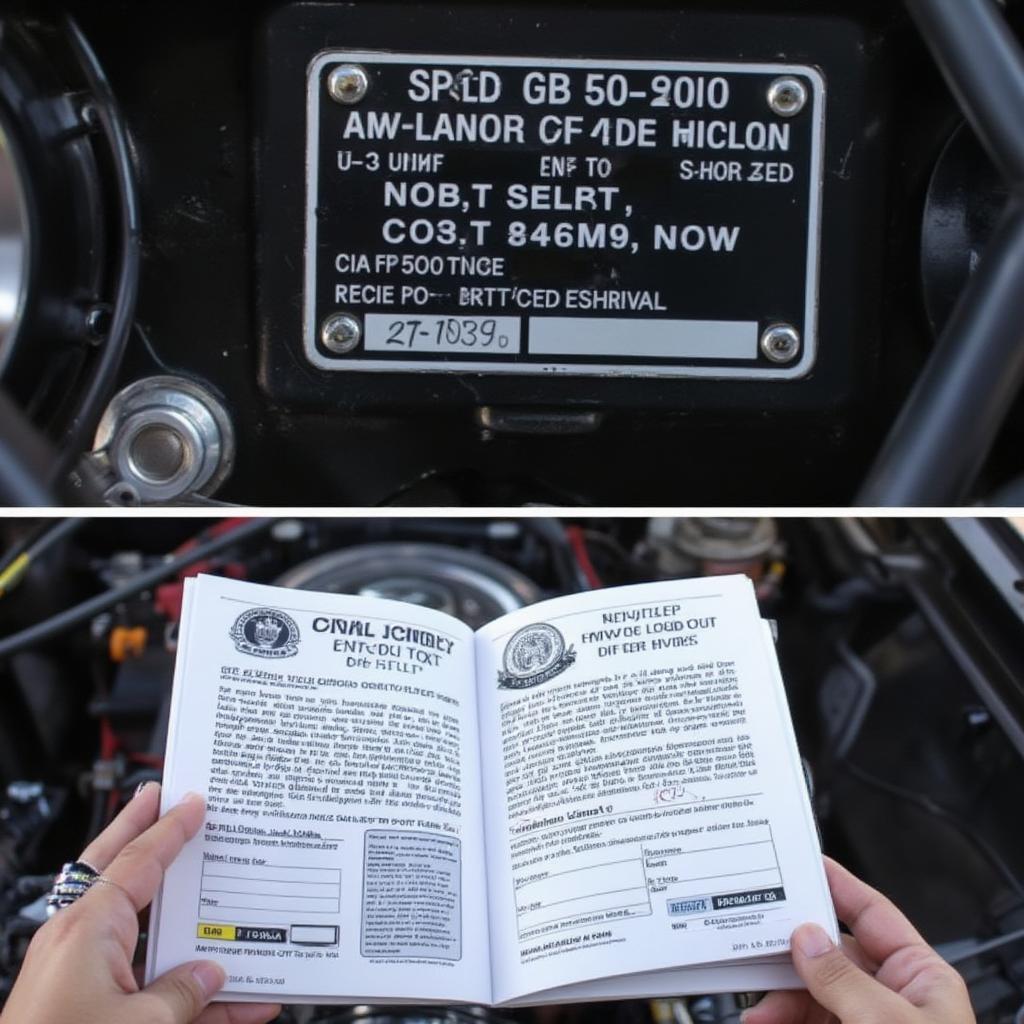Classic Car Wash and Oil Change: A Guide to Preserving Automotive History

Maintaining a classic car goes beyond simply keeping it running; it’s about preserving a piece of automotive history. A proper Classic Car Wash And Oil Change are fundamental to protecting your investment and ensuring its longevity. This isn’t just routine maintenance; it’s an act of respect for the craftsmanship and engineering that define these timeless machines.
classic muscle cars often require specialized care, and washing and oil changes are no exception. Understanding the nuances of these seemingly simple procedures can make a significant difference in the long-term health and value of your classic.
Why a Classic Car Wash and Oil Change Matters
Regular classic car washes and oil changes are crucial for protecting your vehicle from the elements and ensuring its mechanical integrity. Dust, dirt, and grime can accumulate on the paintwork, leading to corrosion and damage. Similarly, old, contaminated oil can cause excessive wear and tear on the engine’s internal components.
Protecting Your Paint: The Importance of a Proper Classic Car Wash
Washing a classic car isn’t the same as washing a modern vehicle. Modern clear coat finishes offer a level of protection that older cars lack. Classic car paint is often more delicate and susceptible to scratches and swirls. Using the wrong techniques or products can cause irreparable damage.
What’s the best way to wash a classic car? Hand washing is always recommended. Avoid automatic car washes, as the harsh brushes and strong detergents can damage the paint. Use a pH-neutral car wash soap specifically designed for classic cars and a soft microfiber wash mitt. Work in small sections, rinsing frequently to prevent soap from drying on the surface.

Maintaining Engine Health: The Crucial Role of Regular Oil Changes
Regular oil changes are the lifeblood of any engine, especially in a classic car. Over time, engine oil breaks down, losing its viscosity and ability to lubricate effectively. This can lead to increased friction, heat, and ultimately, engine damage.
How often should you change the oil in a classic car? While modern cars can often go extended periods between oil changes, classic cars typically require more frequent changes. A general rule of thumb is to change the oil every 3,000 miles or every six months, whichever comes first.

Choosing the Right Products for Your Classic
Using the correct products for your classic car wash and oil change is essential. Avoid harsh chemicals and abrasive cleaners, which can damage the paint and seals. Opt for products specifically designed for classic cars.
Selecting the Perfect Car Wash Soap
Choose a pH-neutral car wash soap formulated for classic car finishes. These soaps are gentle on the paint and won’t strip away any wax or sealant. Avoid dish soap or household cleaners, as they can be too harsh and damage the paint.
1964 chevy bel air owners, for instance, should be particularly meticulous about their choice of car wash soap.
Selecting the Right Oil and Filter
When choosing oil for your classic car, consider the engine’s age and condition. Older engines often benefit from a higher viscosity oil, such as 20W-50. Consult your car’s owner’s manual or a classic car specialist for recommendations. Always use a high-quality oil filter designed for your specific car model.
Just as with the 1975 cadillac coupe deville, proper oil selection is paramount for the 1953 cadillac coupe deville.
Step-by-Step Guide to a Classic Car Wash and Oil Change
Here’s a step-by-step guide to performing a classic car wash and oil change:
- Washing: Rinse the car thoroughly to remove loose dirt and debris. Wash in small sections using a microfiber mitt and pH-neutral soap. Rinse frequently. Dry with a clean, soft microfiber towel.
- Oil Change: Warm up the engine, then drain the old oil. Replace the oil filter. Fill the engine with the correct type and amount of oil. Check the oil level using the dipstick.

Preserving Automotive History: More Than Just Maintenance
Caring for a classic car is more than just routine maintenance; it’s about preserving a tangible piece of automotive history. Every wash and oil change is an investment in the future of your classic, ensuring that it continues to run smoothly and look its best for years to come.
Maintaining your classic car, like a prized 1964 chevy bel air, requires diligent care and attention to detail.
FAQ
- What type of soap should I use to wash my classic car? Always use a pH-neutral car wash soap specifically designed for classic cars.
- How often should I change the oil in my classic car? Every 3,000 miles or six months, whichever comes first.
- Can I take my classic car through an automatic car wash? No, automatic car washes can damage the paint. Hand washing is always recommended.
- What type of oil should I use in my classic car? Consult your car’s owner’s manual or a classic car specialist for recommendations.
- Why is it important to use a microfiber wash mitt? Microfiber mitts are soft and gentle on the paint, minimizing the risk of scratches.
- How can I prevent rust on my classic car? Regular washing and waxing can help protect the paint and prevent rust.
- Where can I find classic car specific cleaning and maintenance products? Specialty auto parts stores and online retailers often carry a wide selection of classic car products.




